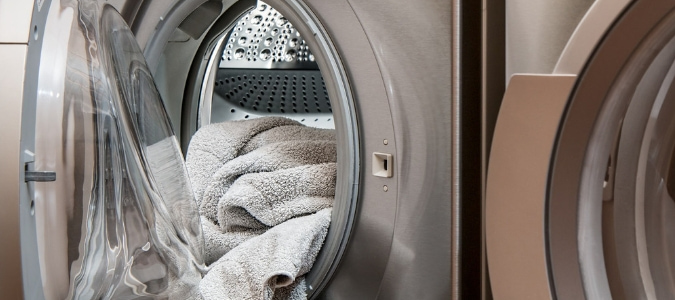
It’s something we do at least once a week. In some homes, it’s done every day, all day long—the laundry. We don’t like to do it, but it’s one of those inevitable things in life. Because the washer and dryer are there whenever we have the time to wash our clothes, it’s easy to take these essential household appliances for granted. This is why knowing how to clean your dryer vent is essential. After all, these appliances can last for five, ten, or even 15 years with proper maintenance.
Whether using a gas or electric dryer, your clothes dryer uses more energy than most other appliances in your home after your heating and air conditioning system. So correctly maintaining it, with just some simple steps, can save you thousands of dollars on your energy bill over the life of your dryer.
Why Worry About Dryer Maintenance?
Every time you wash and dry your clothes, the fibers in the fabric break down, causing lint. Now, imagine trying to breathe through a pile of cotton balls. It takes more energy to breathe, and getting a full breath is challenging. The same happens when you don’t take simple steps to maintain your dryer. When it builds up, lint blocks the free flow of air through the dryer, using more energy, causing your dryer to take more time to dry clothes and running the risk of a lint fire if lint is left to itself for too long.
Your clothes dryer is probably the last thing you’d think of as causing a fire, but according to the United States Fire Administration, there are 2,900 home fires caused by dryers every year, causing an average of five deaths, 100 injuries and over $35 million in damages.
So, what can you do to take care of your dryer? It only requires two steps.
Step 1: Clean the Lint Trap
The most important thing you can do to maintain your clothes dryer is to clean out your lint trap after every load of laundry. The lint trap is located inside the dryer near the dryer door. When you slide the lint trap out of the holder, you’ll see a screen that can get covered with lint, more significant bits of fabric, pieces of tissue, even buttons and string. Remember that air passes through the lint trap, so the more build-up there is, the less likely you will have unrestricted airflow, causing your dryer to work harder.
Cleaning the lint trap is the easiest part. If you use dryer sheets, run the sheet over the lint trap, capturing all the lint into a ball and then throw it away. If you don’t use dryer sheets, moisten one of your fingers and run it around the edge of the lint trap; the lint will follow.
Step 2: Clean the Dryer Vent
After the lint trap comes the dryer vent; dryers typically vent air to the outside, sending the warm air out of the house. Even the best, cleanest lint trap won’t catch every fiber, leading to lint buildup in the vent. The more lint that builds up, the more likely your dryer’s efficiency will reduce. If left unchecked, it can result in a fire. Even a tiny spark of static electricity can catch the built-up lint on fire.
The dryer vent takes a little more to clean. Start by unplugging your dryer; if you’re using a gas dryer, make sure to shut off the gas before disconnecting the dryer. Pull the dryer away from the wall and disconnect the vent from the dryer itself. Use your home vacuum with the crevice attachment to pull any remaining lint from inside the vent. Then, reconnect the vent and the power/gas supply before pushing the dryer back against the wall.
Make sure to clean the inside and the outside of your dryer vent. Take the vacuum outside, remove the cap from the side of the house, and vacuum using the crevice tool again. Once you’ve reconnected everything, run your dryer on air fluff for about 15 minutes to dislodge anything that escaped the vacuum.
We Can Help Clean Your Dryer Vents
Cleaning the lint trap and dryer vent regularly can extend the life of your clothes dryer, reduce energy costs and keep your family safe. If you don’t feel comfortable cleaning your dryer vent yourself, call Capitol Chimney. We’re experts at cleaning small, tight spaces and will help you take the proper preventative measures to keep your home safe.


